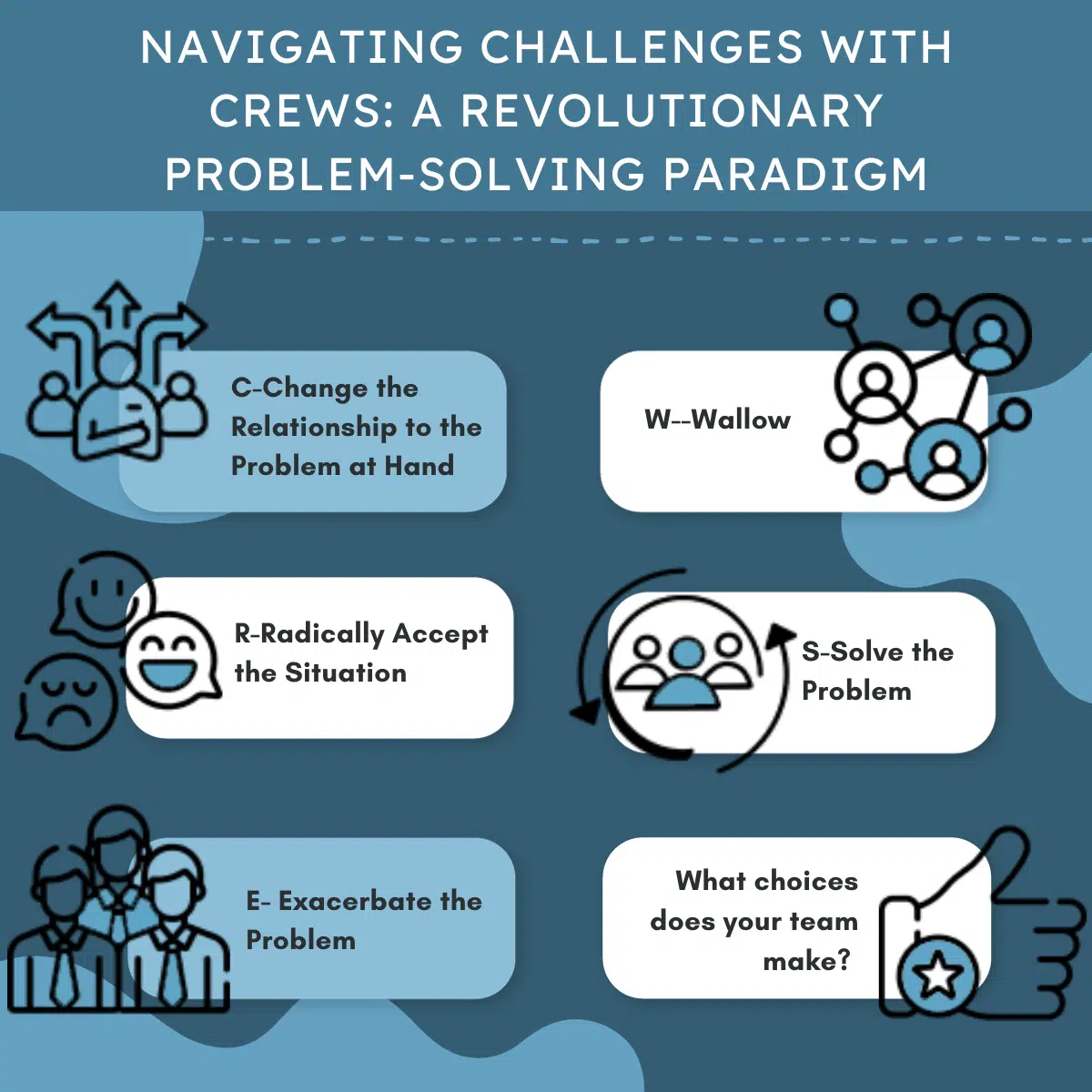Navigating Challenges with CREWS: A Revolutionary Problem-Solving Paradigm
Workplace challenges are inevitable. Whether it’s a project setback, budget cuts, failure, team conflict, or unexpected hurdles, how we respond to these issues can significantly impact our success. Navigating Challenges with CREWS: A Revolutionary Problem-Solving Paradigm is a framework designed to transform your perspective on problem-solving and turn obstacles into opportunities. Learn about the five choices teams can make to help them thrive or languish.
What is C.R.E.W.S?
C-Change the Relationship to the Problem at Hand
The first choice in the C.R.E.W.S approach is “C” -change your relationship to the problem. Instead of viewing challenges as roadblocks, consider them opportunities for growth and innovation. Change the narrative and embrace a mindset shift that positions problems as opportunities and catalysts for improvement. By altering your perception, you empower yourself and your team to approach issues with curiosity and creativity.
R-Radically Accept the Situation
Next is the “R” – radically accepting the situation. Embracing acceptance is a pathway to reducing suffering. It involves a continuous effort to redirect our focus toward recognizing the unadorned reality of the situation without passing judgment. It’s about embracing the facts and understanding that non-acceptance and resistance can impede progress. In business, this means facing challenges head-on with courage and bravery, recognizing reality, and adopting a proactive stance. Accepting the situation lays the foundation for strategic decision-making and effective problem-resolution.
E-Exacerbate the Situation
Surprisingly, “E” for exacerbating the situation is a choice, albeit not a particularly effective one. Leaders or teams can exacerbate the problem by complaining or being dissatisfied with the outcome; however, teams are vulnerable to languishing in a negative mindset. As leaders, be aware of this risk and shift towards a more productive problem-solving strategy.
W-Wallow
“W” stands for wallowing, a detrimental state where leaders and teams, instead of proactively addressing challenges, wallow in the problem by indulging in negativity or dwelling on setbacks. When leaders and teams wallow, the focus shifts away from implementing effective solutions, and energy instead is directed toward intensifying the perceived severity of the issue. Wallowing can hinder progress, diminish morale and productivity, and impede the team’s ability to navigate obstacles with resilience. Leaders must encourage a culture of resilience and swift problem-solving rather than allowing wallowing to undermine productivity and hinder teaming and the pursuit of success.
S-Solve the Problem
The final and most pivotal step is “S”- solving the problem effectively and actively. Your team is well-prepared to implement practical solutions, equipped with a shifted perspective, a genuine acceptance of the situation, a comprehensive analysis, and a collectively shared emotional awareness. Collaborate, innovate, and execute confidently, turning challenges into stepping stones for success.
Conclusion:
Although workplace challenges are inevitable, Navigating Challenges with CREWS: A Revolutionary Problem-Solving Paradigm is designed to evaluate your team’s choices and related outcomes. Incorporating the C.R.E.W.S approach into your problem-solving toolkit can revolutionize how you navigate obstacles in the business world. When workplace challenges and problems emerge, what choice(s) does your team make?
Recommended Reading
The Two Traits of the Best Problem-Solving Teams
Harvard Business Review
Is Your Team Solving Problems, or Just Identifying Them?
Harvard Business Review
Meet Jodie, your Culture & Transformation Captain. With over twenty years helping people change, facilitating team discussions, building cultures, designing, implementing and teaching classes, your organization is in good hands.




